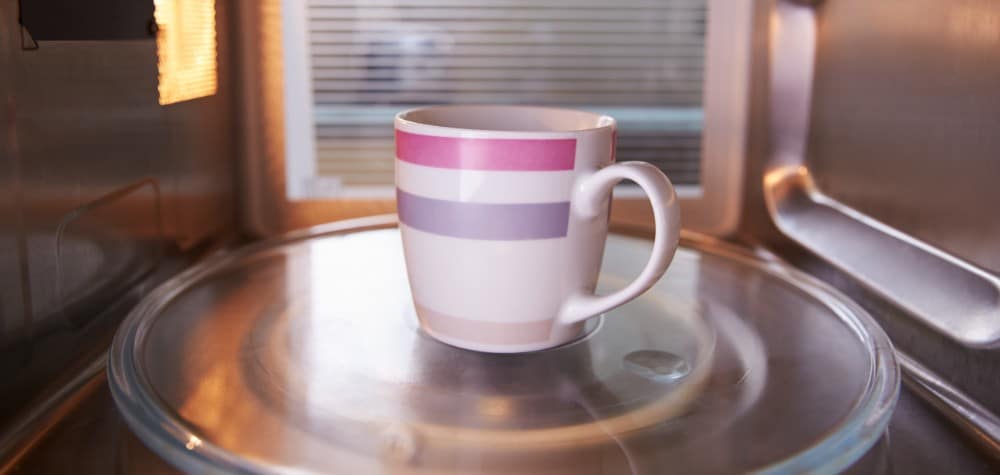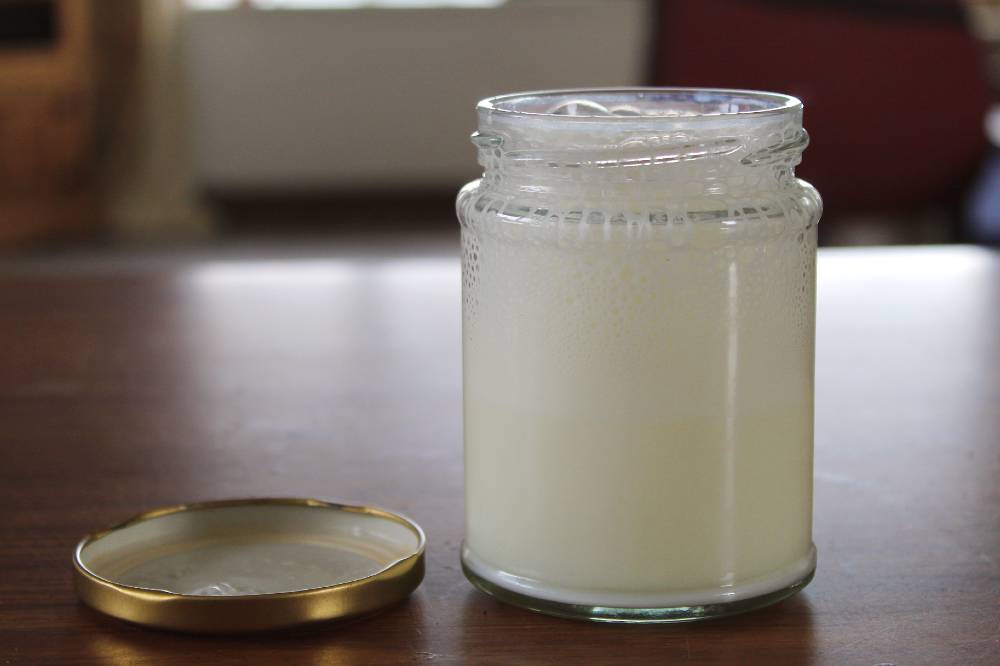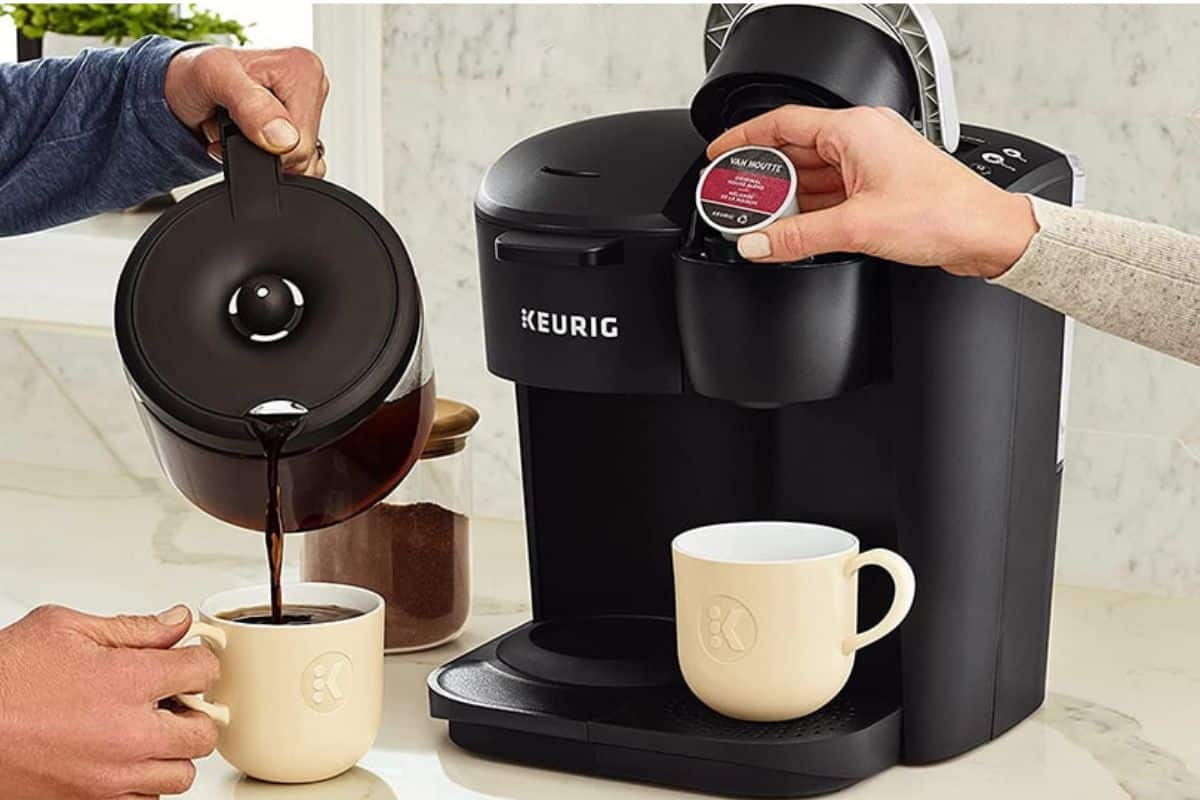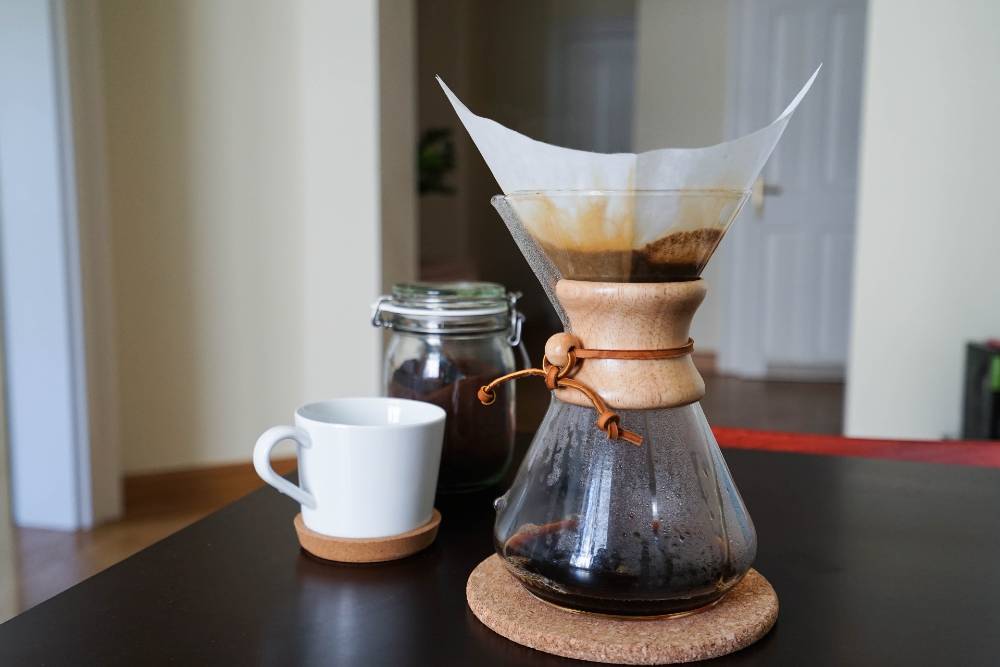Coffee is such a versatile drink. There are so many ways to brew a cup of mud. I wondered what the most basic, and accessible, method of making java at home could be. Could it be as simple as using a microwave?
Turns out you can use a microwave to make your coffee. Whether you are just making one cup or a big jug, a microwave is great at warming up water. So it’s just one more little step of ingenuity to brew your beans.
You are simply using the microwave to heat water the same way you would with a kettle. So you just need to microwave the water until it’s near boiling and then add it to your ground coffee, let it brew and then filter it out through some sort of filter. You can use one mug to hear water and brew, then pour it through a paper filter into another mug.
There is more than one way to skin a cat, or in this case, make a mug of java. I tried a few different methods. Read on to see how I managed it and even get ideas for your own way!

Making Microwave Coffee – The Coffee Bag Method
As the name hints, this method is all about getting your ground beans into a bag and brewing it in your mug just like tea.
A spare coffee filter works great. You can even use some cheesecloth or even just a thin tea towel! Anything that you can bundle your ground beans into which lets water soak through it should work.
- If you are going to use a filter paper, load it up with the same amount of grounds you would normally use in a cup. So that’s about 1-2 tablespoons of ground coffee Fold the top of the filter over to enclose the grounds and hold it closed with a paper clip or binder clip. You could even staple it shut if you’re confident the staple won’t come out.
- Use a big microwave-safe mug. Fill it about two-thirds full. That will give you space for the coffee-bag.
- Put your mug in the microwave oven, and give it a 60-second blast at its full power level. A good indication is steam billowing from your mug.
- If your mug is not steaming, carefully use the back of your hand to test if the mug is warm. Don’t burn yourself. Supposedly the ideal temperature for brewing coffee is between 195°F and 205°F (90°C to 96°C) but no higher than 205°F because that will start to scald the beans and create more bitter flavors.
- If you’re not convinced your mug is warm enough yet, put it back in the microwave for ten-second blasts until it’s cozy enough.
- When your mug is warm enough, carefully take it out of the microwave and pop your improvised coffee-bag into your mug.
- Leave your coffee-bag in there for 3 to 4 minutes
- Depending on how you’ve improvised your coffee bag, you might be able to just pick it out of the mug with your fingers, but be careful that thing is hot! A fork could be the perfect tool to fish that bag out of your mug.
Tah-dah! One cup of coffee. Go ahead and add any milk or sugar or just enjoy it black. Don’t forget you can compost your used coffee grounds.
The Let It Settle Method
What if you don’t have filters, cheesecloth, or something to make a coffee-bag with? Not a problem. Just put your grounds straight into the mug! I’m not crazy, hear me out.
This method follows the ancient method of using a Turkish coffee pot. With a Turkish coffee pot, you would brew your coffee up in this little pot, let the grounds settle to the bottom, and gently pour the coffee out into something else leaving the grounds in the pot.

I’m not saying you need a Turkish coffee pot. You can use a regular mug or something like a jug that will pour well.
- Heat some water to the desired temperature up in a mug or jug, just like I described above
- Put your two to three teaspoons of grounds in the mug
- Wait a few minutes and let the grounds settle down to the bottom of the mug.
- Gently pour your brewed coffee into another mug, slowly not letting out any of the settled grounds.
- Done.
Making Lots? Use a Jug
What’s the difference between making one mug for yourself or making a whole load of wakey juice for lots of people? The only limit is really the size of your microwave.
Use a microwave-safe jug. Most Pyrex or plastic jugs are microwave-safe. Fill that sucker up with the amount of water you will want for everyone’s coffee.
Top Tip: Using fairly regularly sized, yet big, coffee mugs? I’m betting they are about 12oz mugs (350ml). Well, it’s a jug, it’s probably got a scale on the side. You can be confident you’re measuring out enough water. Remember to top it up with a little extra water to be leftover soaked into the grounds.
A jug will work brilliantly with both the coffee-bag and let it settle methods.
Can You Froth Milk In A Microwave?
Want some lovely frothy milk to go with that coffee? Want to make yourself a cappuccino or a latte? It won’t be as good as Starbucks but it could still be a nice time. And luckily you can use your microwave for that too!
While a handheld frother or automatic milk frother might not be the most common of household appliances, don’t worry, I’ve got you covered with these DIY methods!
The Jar Method
Do you have a spare mason jar just lying around? You could even use a clean jar that you bought with some food or condiment in it.
With a jar, you can make half of its volume of frothed milk. So say you have a 12 oz jar, you could make 6 oz of frothed milk. Why? You’ve got to fill it up no more than halfway for this to work. You need space for the froth.

Fill your jar up no more than halfway with your favorite milk. Seal it up tight with the lid. Now shake the hell out of that jar! You’ll need to shake it for about 30 to 60 seconds.
Happy with your froth? Take the lid off and pop the jar in a microwave for 30 to 45 seconds at full power.
Enjoy!
The French Press Method For Milk Frothing
Do you have a french press (cafetiere) kicking about? Are you like me and have three in the house? Wait, why didn’t you just brew your beans in that? Never mind that, you can use those things to froth your milk too!
Some might say to microwave the milk first, but when you do that you’re frothing warm milk which might come shooting up out the sides of the french press. I think you should edge on the side of caution and froth it first then heat it. Here’s how!
You need to be able to remove all pieces of metal from the french press jug. If your french press has metal attached to the jug part, you will need to just heat the milk first in a separate microwave-safe container, and then froth it. Never put metal in a microwave.
Pour milk into your french press until it is no more than one-third full. The milk is going to at least double in volume so you’ll need the space.
Pop the french press lid on. Hold the lid down firmly with one hand and push and pull the plunger through the milk. Don’t be too violent with it, you don’t want the milk to come shooting up and out of it. Plunge it through the milk until you are happy with how forthy it has become.
Take the plunger-lid off your french press. Remove any other bits of metal and microwave that sucker for 30 to 45 seconds.
Can You Make Regular Instant Coffee In a Microwave?
Making instant coffee in a microwave is even easier than with regular coffee.
I will always recommend that you “wet” your instant coffee first. Even if you’re just pouring hot water into your mug, pour a little bit of cold water in first and dissolve the instant granules. This will give a much less bitter brew.
In this case, don’t just add a little bit of cold water to your instant granules, fill the mug up two-thirds of the way. Give it a good stir and make sure those granules are completely dissolved. Now all that’s left to do is give it some heat.
Just like with the coffee-bag method, give it a 60-second blast on full power, to begin with. Test it to check it’s warm enough. Check for steam. If it’s not warm enough, give it a ten-second blast at a time until you’re happy with it.
Voila, a cup of joe.
Are You Going To Be Doing This Often?

Making coffee in a microwave is a great way to make a brew in a pinch but to be completely honest it’s a bit of a faff. If you are going to be wanting to heat the water regularly it would be well worth it to invest in a kettle or a good old-fashioned coffee maker.
A kettle is probably the easiest way to boil up some water. Not that you want to be using boiling water for your coffee. Just a little cooler is best.
With microwaving your water, you’ve got to pick up a hot mug or jug of water to get it out of the microwave. A kettle will heat your water safely and it has a handle, which won’t get warm, to make pouring the hot water easy. A kettle is a handy addition to any kitchen for more than just coffee (or tea).
While brewing your mud with a microwave is easy and great in a pinch. I’d recommend a kettle.
Conclusion
Is this something that coffee lovers do? No.
WIll you get a great coffee taste from your coffee beans this way? No.
But it will get you a hot coffee when you have a little other option. If you want a delicious fresh coffee then just get to a coffee shop, they’ll get you a fresh cup in no time. Or if this is how you need to live your life then save up and get yourself a coffee machine. It doesn’t have to be expensive to be high quality.
But be warned, soon after that, you’ll want a coffee grinder and it just keeps going from there!
Recommended Reading
Best stovetop gooseneck kettles reviewed





